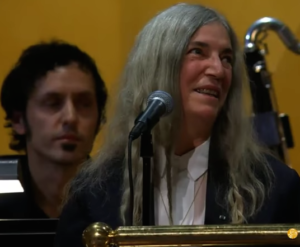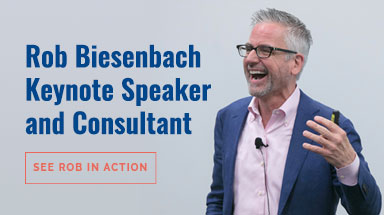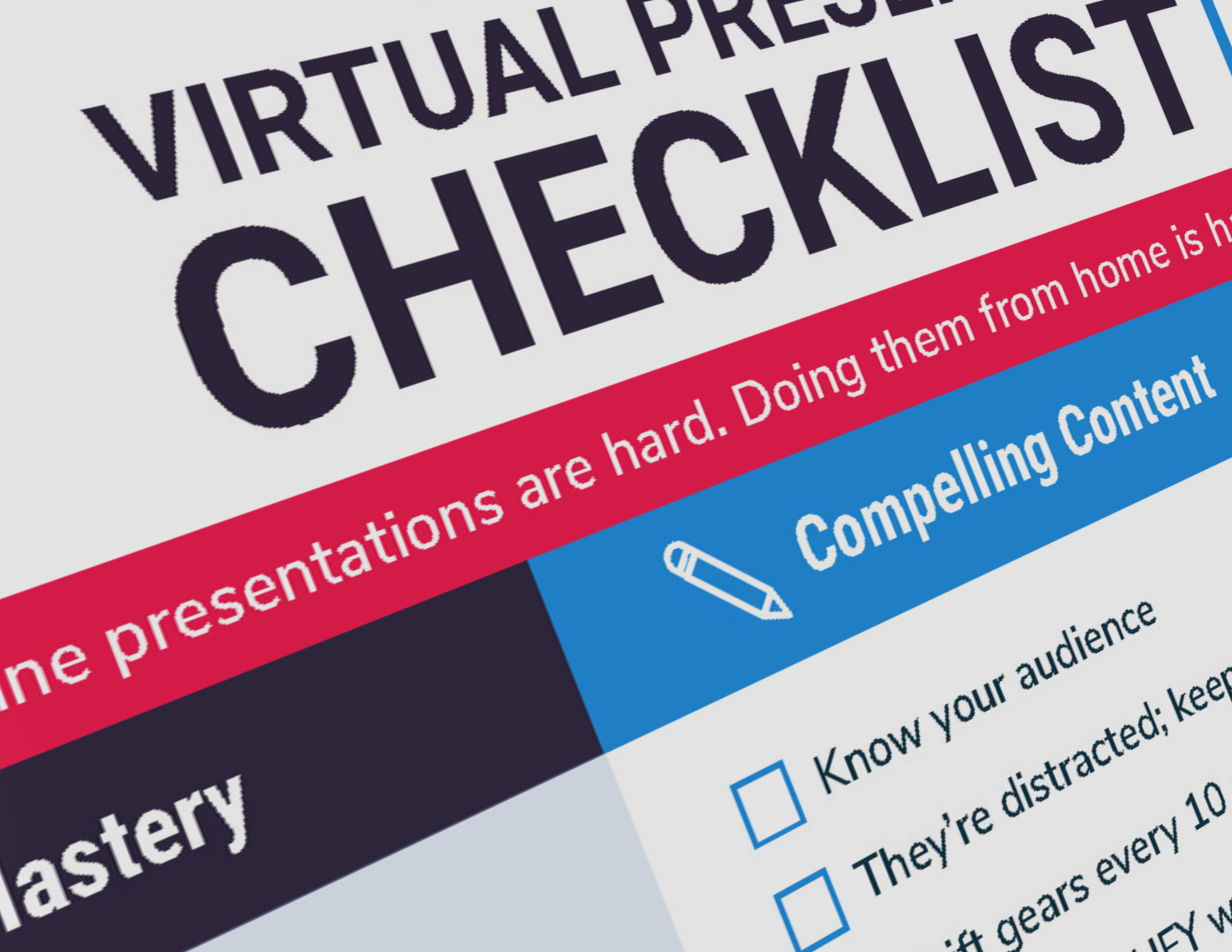
If you hadn’t heard, singer/poet/artist Patti Smith went to Stockholm this weekend to accept the Nobel Prize on the enigmatic Bob Dylan’s behalf. As part of the ceremony, she agreed to sing Dylan’s “A Hard Rain’s A-Gonna Fall.”
As they say in the viral video business, you won’t believe what happens next! (Watch via the link or check out the embedded version of the video at the bottom of this post.)
At the two-minute mark she forgets the words (or perhaps, as some suggest, was too choked up to go on)*, apologizes and asks to start again. It’s all very beautiful and art in and of itself.
But on a practical, earth-bound level, this extraordinary moment offer six things that anyone who gets up in front of an audience, from an artist to a professional speaker to an everyday presenter, can take to heart.
1. Keep Calm & Carry On
Smith doesn’t overreact. She doesn’t seem visibly perturbed. She simply acknowledges what’s happened and moves on. That’s the mark of a professional.
LESSON: Whatever happens during your presentation — whether it’s a failure of technology or your own mistake — don’t beat yourself up or drag the moment out. Just get on with it.
2. Don’t Cast Blame
Smith readily admits the mistake is hers — she forgot the words. What a refreshing contrast with celebrities (and normal, everyday people) whose first instinct is to blame those around them.
LESSON: Accept responsibility for your mistakes. And when it’s not your fault? Don’t publicly criticize or berate the crew or staff. It will only make you look small.
I once had an outright technology disaster where the projection system went down for 20 minutes. Afterwards the AV guy thanked me for not losing my cool on stage. Apparently he’d seen speakers under similar circumstances publicly berate the crew, which seems to me the fastest way to alienate an audience.
3. Don’t Dwell on the Mistake
If there’s anything about Smith’s reaction that I would not recommend as a model for mere mortals it’s this: she apologizes five times. (She gets a pass because, come on, Patti Smith!)
LESSON: Don’t wallow in your mistakes or drag things out. The less you call attention to a problem, the less your audience will notice. Just let it go and keep moving.
4. Be Humble
On the other hand, Smith’s humility works strongly in her favor. She’s Patti Smith, dammit! A living legend! The reaction is so genuine it’s endearing.
And then for her to admit she’s nervous? It humanizes her, and it reminds the audience of what an important moment this is — to her, to Dylan, to them.
LESSON: There’s strength in humility. No matter who you are or what your position, you can afford to show a little humanity.
5. Don’t Worry About Appearing Nervous
Up until the moment Smith confesses her nervousness, could you tell she was nervous? Did you see any of the outward signs? Of course not, because we are our own worst critics.
LESSON: If you feel your knees knocking, your hands shaking, or your voice quaking, don’t worry! Chances are your audience has no idea.
I see this time and again in my presentation training. Presenters will say, “Oh my God, I was SO nervous!” Then I’ll ask the rest of the group if the person seemed nervous to them, and they all say no.
Honestly, no one but you can hear your heart pounding!
6. The Reward? Earning the Audience’s Goodwill
Finally, at 2:23 comes the payoff: the audience erupts in applause. At this point she could sing the dictionary and they’d be elated.
LESSON: When things go wrong, the audience is on your side. They are rooting for you to succeed and they’re impressed when you handle problems with grace and ease.
You will be judged not for your mistakes but by how you react to them.
For More on How to Recover From Mistakes
Of course, for Patti Smith, the ability to stay calm in the center of the storm is the result of decades of experience performing on stage. Over her long career she’s likely seen everything.
For the rest of us, I encourage practice, and lots of it. If you want to know more, here are five tips on How to Recover from Mistakes During a Speech.
And here’s the video:
* UPDATE: Here’s Smith’s explanation of what came over her that day. It’s beautiful, like all her writing.




